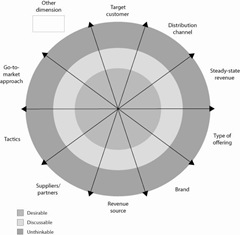The Kaizen section was designed purposely to be an easy week, a week of reflection, Hansei. Many of us get in a hurry with Lean trying to think it is this groundbreaking and another silver bullet. We forget that Toyota started working with Deming in the 1950s and progressed through a series of changes to what evolved into the Toyota Production System today. In my podcasts and my experience with leaders of successful Lean organizations, they have all wished they would have tried fewer things in the beginning.
Lean is a journey. As my friend Dr. Michael Balle says,
“Lean is not a revolution; it is solve one thing and prove one thing.”
How does Lean apply to design and product development? I started out this journey with Standard Work (SDCA) progressing to Continuous Improvement (PDCA) and then to Design (EDCA). I may have led you astray with the application of EDCA as that has many of the newer thoughts of Design Thinking applied. Most Lean product development and design methods follow another path. This path includes the thought processes of Toyota and other notables, such as Allen Ward, a University of Michigan professor he led the first major study of Toyota’s product development system.
This week I will stay somewhat rooted in the more traditional Lean Design and Product Development methodology forming a basis for Lean into software development and the Lean Startup movement.
We can list a variety of tools and practices that are incorporated Lean Design. However, I recommend starting with the obvious, PDCA. If you have listened to the audio or watched the video exchange between Michael Balle and myself, you will understand my overall thinking of how PDCA is the culture of Lean and should reside in all of your thinking, whether it is Standard Work or Design. It is the underlying thinking that drives people and processes and eventually forming the culture.
An outtake from the conversation with Dr. Balle:
Go to the next page Design/Train
Extra Material:
Great post (excerpt below) on thinking about your innovation strategy. But one comment he makes here is so true. How many of innovate one product at a time thinking that it is the answer. Remember, even with a well thought out strategy, you are not always right, especially when it comes to innovation. The word kind of says “Risk” doesn’t it?
Scott D. Anthony is President of Innosight LLC, an innovation consulting firm in Watertown, Massachusettssay:
Companies just starting innovation efforts often begin by getting a group of people together and telling them “It’s innovation time!” I’ve never seen efforts like this succeed in meaningful ways.
- Instead, we suggest that companies begin innovation efforts by creating an innovation strategy that details clear targets and tactics.
- Clear targets help internal innovators know what they’re shooting for.
- Then think about the sources of growth.
- Look at what’s already in your development pipeline.
- Calculate the gap (it will almost always be a gap) between where your projections suggest you will be and where you want to be.
- Think of the tactics that are on and off the table.
- Use this “Goals and Boundaries” visual (from Chapter 1 of The Innovator’s Guide to Growth).
 The figure (download it on Scott’s blog post) represents the “goals and boundaries” of innovation. Note how the figure includes a diverse set of elements, such as steady-state revenue, channel, business model, and brand. Customize the vectors for your context, and gain consensus about what’s clearly in bounds, what’s on the fringes, and what’s clearly out of bounds.
The figure (download it on Scott’s blog post) represents the “goals and boundaries” of innovation. Note how the figure includes a diverse set of elements, such as steady-state revenue, channel, business model, and brand. Customize the vectors for your context, and gain consensus about what’s clearly in bounds, what’s on the fringes, and what’s clearly out of bounds.
Gaining consensus on this visual will help you to evaluate ideas and to guide innovators in their exploration efforts.
Formalizing targets and tactics is a great way to kick-start your innovation efforts. Start allocating resources to support your strategy, and you are on your way to innovation success!
This is from Scott Anthony.
